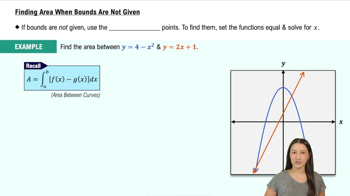{Use of Tech} Midpoint Riemann sums with a calculator Consider the following definite integrals.
(a) Write the midpoint Riemann sum in sigma notation for an arbitrary value of n.
∫₁⁴ 2√𝓍 d𝓍
 Verified step by step guidance
Verified step by step guidance Verified video answer for a similar problem:
Verified video answer for a similar problem:

